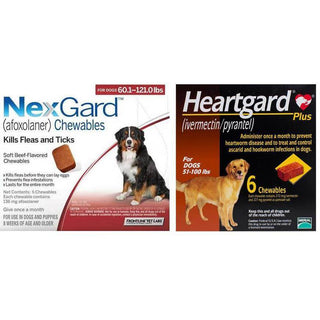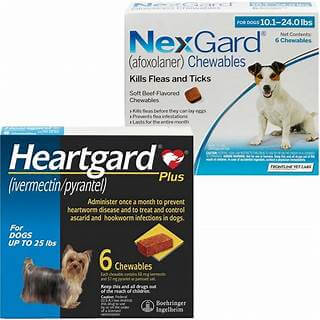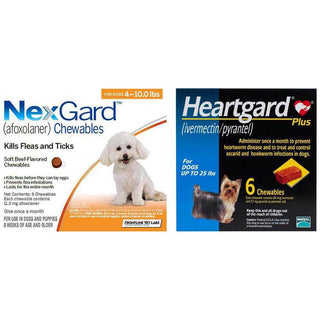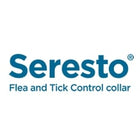
If you discover fleas or ticks on your dog, there's no need to panic. These common pests can often be eliminated with the proper treatment, usually within a few hours.
Acting quickly is essential, as fleas and ticks can lead to severe health issues for your pet, including flea allergy dermatitis, tapeworms, Lyme disease, anaplasmosis, and ehrlichiosis. Ticks typically need to remain attached for 24-48 hours to transmit infections, so promptly removing and treating these pests is crucial for your dog's health.
Fast-acting treatments like Credelio™ work efficiently, starting to kill fleas within four hours of the first dose. After treatment, check your dog's skin to ensure that dead ticks have fallen off, as they can sometimes remain attached even after dying. Continue monitoring your pet regularly to ensure they are free of harmful pests.
How to Tell If Flea and Tick Medication Is Working on Your Dog
After giving your dog flea and tick medication, you should start noticing dead fleas within 24 hours. While the fleas may be gone, your dog's itching can take a few days to subside. To prevent re-infestation, most veterinarians recommend using flea and tick prevention treatments every month throughout the year. Since the flea life cycle—spanning from egg to adult—can take up to three months, some treatments may only target adult fleas, making consistent prevention essential.
Ticks are more resilient than fleas and typically take 24–48 hours to be eliminated, depending on the treatment used. Dead ticks may not always detach from your dog's skin. It's generally best to have a veterinarian remove any dead ticks to ensure the entire tick, including its head, is properly extracted to prevent infection or irritation.
Oral Flea and Tick Preventive Medications
Oral preventives have gained popularity for their effectiveness and convenience, making them an excellent option for households with multiple pets or young children. These chews and tablets are now among veterinarians' most recommended flea and tick solutions.
- Isoxazoline: Isoxazoline-based medications are a newer class of highly effective preventives targeting fleas and ticks. Products like Credelio™, a monthly chewable tablet, begin killing fleas and ticks (Ixodes Ricinus) within four hours of administration. While generally safe, some pets may experience side effects. Consult your veterinarian to determine if isoxazoline preventives are suitable for your pet based on their health history.
- Spinosad: Spinosad is a potent oral medication that prevents fleas effectively.
- Nitenpyram: This is the only over-the-counter oral flea treatment currently available. It works rapidly but provides protection for 24 hours, making it a short-term solution.
- Milbemycin/Lufenuron: Milbemycin is primarily a heartworm preventive, while lufenuron prevents flea infestations by stopping eggs from hatching. However, lufenuron does not kill adult fleas.
Consult your veterinarian to select the best oral preventive for your dog, ensuring comprehensive protection against fleas and ticks.
Topical Flea and Tick Preventive Medications
Topical flea and tick treatments are liquid solutions applied directly to your dog's skin, typically at the nape of the neck. These products must be allowed to dry entirely before other pets or children come into contact with your dog, as they can be harmful if ingested, particularly by cats. Additionally, bathing your dog may reduce the effectiveness of some topicals, so it's important to follow the product instructions carefully to ensure continued protection.
Flea and Tick Prevention Collars
Not all flea and tick collars offer the same level of effectiveness. Older collars often use insect growth regulator ingredients like tetrachlorvinphos or deltamethrin, which can vary in how well they work. It's also important to note that young children should not handle these collars.
Newer products like the Seresto collar are more effective and user-friendly. This over-the-counter collar begins working within hours and protects for up to eight months. However, pet owners should wash their hands thoroughly after handling flea and tick collars to ensure safety.
For optimal results and safety, always choose products based on your pet's needs and consult your veterinarian if you have concerns or questions.
How to Eliminate Fleas and Ticks from Your Home
Removing fleas and ticks from your home requires more than treating your dog. Follow these essential steps to eradicate these pests effectively:
- Treat All Pets in Your Home: Ensure all pets—dogs, cats, ferrets, and rabbits—are on an appropriate flea and tick prevention regimen.
- Vacuum Regularly: Vacuum daily to remove flea eggs and larvae, even on hardwood or tile floors. Empty the canister or dispose of vacuum bag immediately to prevent re-infestation.
- Wash Bedding Weekly: Wash all pet and human Bedding in hot water at least once a week to kill any remaining fleas or ticks.
- Bathe Your Dog Weekly: During a flea infestation, regular baths can help remove dead fleas and alleviate discomfort for your dog.
- Maintain Your Yard: Keep your yard tidy, as fleas and ticks thrive in shaded, overgrown areas. Trim dense brush and tall grass, and ensure a clear buffer between your home and the forested regions.
- Professional Pest Control: Explore the option of engaging a professional pest control service to safely treat your home and yard using pet-friendly methods.
- Use Safe Insecticides: Consult your veterinarian about safe insecticides for home use, such as sprays, powders, or foggers. Always use pet-safe products and follow the manufacturer's instructions carefully.
For a detailed guide, check out this tutorial on step-by-step methods to eliminate fleas and ticks in your home.
Managing Additional Health Issues Caused by Fleas and Ticks
Fleas and ticks can lead to numerous health problems in dogs, ranging from mild irritation to severe medical conditions. Here’s an overview of common problems and how to manage them effectively:
Flea Allergy Dermatitis (FAD)
Many dogs may experience an allergic reaction caused by flea saliva, leading to flea allergy dermatitis. Symptoms include intense itching, inflammation, open sores, scabs, and hair loss, often concentrated around the lower back, tail, or hind legs. Promptly eliminating fleas is critical to minimizing allergic reactions.
Treatment for flea allergy dermatitis may include:
- Medicated shampoos or wipes to soothe the skin.
- Oral antibiotics for infections caused by scratching.
- Anti-inflammatory medications to reduce itching and swelling.
Anemia
A large infestation of fleas or ticks can cause anemia as these pests feed on your dog's blood. Signs of anemia include lethargy and pale gums. Treatment options include:
- Oral iron supplements for mild anemia.
- Blood transfusions for severe cases.
Diseases Transmitted by Fleas and Ticks
Fleas and ticks can also carry and transmit various diseases that may harm your dog:
-
Flea-Borne Diseases:
- Fleas can transmit tapeworms, a common intestinal parasite, and bacterial infections like plague.
- Reach out to your veterinarian if your dog exhibits signs like diarrhea, vomiting, or lethargy. Additional testing and treatment may be required.
-
Tick-Borne Diseases:
- Ticks can transmit serious bacterial infections, including Lyme disease and Rocky Mountain Spotted Fever.
- If you suspect your dog has been exposed to ticks, your vet may recommend testing for common tick-borne illnesses. Treatment typically involves antibiotics to address the underlying infection.
Taking preventive measures and addressing infestations early are essential for keeping your dog healthy. If your dog shows any abnormal symptoms, contact your veterinarian right away for proper evaluation and treatment.
The Bottom Line
Fleas and ticks are more than just a nuisance—they can lead to serious health issues for your dog. Early prevention, prompt treatment, and regular veterinary care are key to protecting your pet from the harmful effects of these pests. Always consult your veterinarian to ensure the best course of action for keeping your dog healthy and pest-free.






